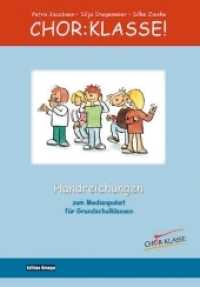- ホーム
- > 洋書
- > 英文書
- > Science / Mathematics
Full Description
Jim Green 1.1 THE THAMES ESTUARY:A PERSONAL VIEW For almost 50 years I have lived close to the Thames estuary (Figure 1.1). In the early 1950s, from our flat in Pimlico, we could walk along the embankment opposite Battersea Power Station. At low tide, the exposed mud had large red patches caused by the haemoglobin in innumerable tubificid worms. These formed the basis of a minor trade. Men with waders and sieves would collect the worms and sell them to the aquarium trade as food for fishes.The superabundance of these worms depended on the gross organic pollution of this reach of the Thames. Towards the end of the 1950s we moved to Teddington, within a few minutes' walk from the lock. Casual observation of the birds on the river indicates an increase in the piscivores over the last 20 years.Cormorants tPhalacrocorax carbo) are regularly seen, and grey herons (Ardea cinerea) are more abundant. On a good day it is possible to see up to eight herons around the weir and below the lock. Another bird that is now common- place in the area is the great-crested grebe (Podiceps cristatus).The regular mallard (Anas platyrhynchos)and Canada geese (Branta canadensis)are some- times joined by tufted duck (Aythafuligula)and mandarin (Aixgalericulata).
Contents
1 Introduction.- 1.1 The Thames estuary: a personal view.- 1.2 Cleaning up the Thames and the role of this book.- 2 The Thames estuary: a history of the impact of humans on the environment and a description of the current approach to environmental management.- 2.1 Introduction.- 2.2 Definition of the study area.- 2.3 Basic description of the Thames estuary.- 2.4 The Thames estuary before 1800.- 2.5 A history of the impact of humans on the environment (1800 to the present day).- 2.6 Water quality management during the Thames Water Authority era.- 2.7 Habitat loss as a result of flood defence work and land-claim.- 2.8 The current approach to environmental management.- 3 Physical and chemical characteristics.- 3.1 Introduction.- 3.2 Physical characteristics.- 3.3 Chemical characteristics.- 3.4 Modelling.- 3.5 Summary.- 4 The algae of the Thames estuary: a reappraisal.- 4.1 Introduction.- 4.2 The present reappraisal.- 4.3 The algal flora by habitat.- 4.4 Seasonality.- 4.5 Changes in occurrence and distribution.- 4.6 Distribution along the estuary.- 4.7 Future studies.- 4.8 Conclusion.- 5 The Zooplankton communities of the Thames estuary.- 5.1 Introduction.- 5.2 The current study on the Zooplankton of the Thames estuary.- 5.3 Composition of the Zooplankton.- 5.4 Spatial and temporal distributions of the major groups.- 5.5 Changes in dominance of major species.- 5.6 Vertical and lateral distributions.- 5.7 Comparison with Zooplankton communities in other estuaries.- 5.8 Zooplankton functioning.- 5.9 Conclusions.- 6 The benthic macroinvertebrate communities of the Thames estuary.- 6.1 Introduction.- 6.2 Thames Estuary Benthic Programme.- 6.3 The Thames divided.- 6.4 Benthic macroinvertebrates — zone by zone.- 6.5 Conclusions.- 7 Temporal changes in the movements andabundance of Thames estuary fish populations.- 7.1 Introduction.- 7.2 Sampling method.- 7.3 Species numbers.- 7.4 Diversity.- 7.5 Species abundance.- 7.6 Community composition.- 7.7 Trawling method.- 7.8 Summary.- 8 Host-parasite interactions: case studies of parasitic infections in migratory fish.- 8.1 Introduction.- 8.2 The intestinal fish helminth Pomphorhynchus laevis.- 8.3 Virus-associated spawning papillomatosis in smelt.- 8.4 Other parasites of migratory fish.- 8.5 Summary and conclusions.- 9The Thames estuary saltmarsh plant and sea-grass communities.- 9.1 Introduction.- 9.2 Saltmarsh development.- 9.3 Intertidal seagrass communities.- 9.4 Saltmarsh vascular plants and communities.- 9.5 The origin and spread of Spartina.- 9.6 Regional saltmarsh communities.- 9.7 Saltmarsh vegetation of the greater Thames.- 10 Estuaries: towards the next century.- 10.1 Introduction.- 10.2 Early work on estuaries.- 10.3 Concerns for the future.- Appendices.- A Summary of data for selected sites along the Thames estuary.- B Thames estuary species list.- References.





